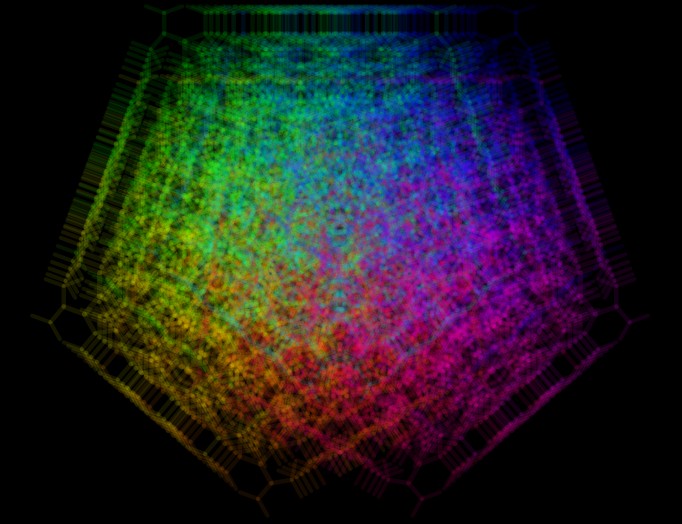Memory Bandwidth and Interference
 Does memory's capacity limit (7 +/- 2 items according to Miller, but now considered to be closer to 4) result simply from limitations of attention, or do more (modality-, feature-, or stage-) specific limitations play a role as well? In the new issue of Psychological Science, Fougnie & Marois present data from 7 experiments on this very topic.
Does memory's capacity limit (7 +/- 2 items according to Miller, but now considered to be closer to 4) result simply from limitations of attention, or do more (modality-, feature-, or stage-) specific limitations play a role as well? In the new issue of Psychological Science, Fougnie & Marois present data from 7 experiments on this very topic.The authors begin by describing how both visual working memory (VWM) and attention (as measured by multiple-object tracking) seem to have capacity limits of around 4 items, and how this has led many to hypothesize that most capacity limitations might be traced to a central attentional bottleneck.
To investigate whether attention does cause this limitation, the authors used a dual-task design in which subjects must remember the location & color of three circles (the VWM task) during the time they are performing a multiple-object tracking (MOT) task. According to their logic, if the capacity limitation is purely due to attentional constraints, then the MOT task should interfere with the VWM task just as much as a second, concurrent VWM task would, assuming that the MOT and VWM tasks were equated for their attentional demands. On the other hand, if the capacity limitation results even in part from content-specific processes, as opposed to solely resulting from an amodal and content-general pool of attentional resources, then the MOT task should interfere with the VWM task less than a second concurrent VWM task would.
The details of the methodology and analysis of results are all in italics, as follows:
40 subjects participated in this task, in which their VWM capacity was calculated via Cowan's K (N*[hit rate + correct rejection rate - 1], based on their performance in remembering the color & location of displays containing three circles each. During the retention interval between display and test, subjects had to track either 1 (low load) or 3 (high load) white circles as they moved randomly throughout a display containing many identical white circles. To prevent participants from using their phonological system to store information, participants performed articulatory suppression, in which they repeated the word "the" 2 times per second throughout each trial.
MOT and VWM tasks showed mutual interference, in that performance on both tasks was lower than on either task independently. Furthermore, the amount of interference increased between the low- and high-load MOT tasks, indicating that there's not simply a constant level of "performance cost" incurred by the dual tasking - instead, that the additional storage demands resulting from the high memory load causes additional interference between the tasks.
Subsequent experiments showed two VWM tasks interfere with each other even more than VWM and MOT mutually interfere. The authors found a level of interference between a simple verbal task and the VWM that was equivalent to that found between VWM and MOT, but less than between two VWM tasks. This shows that the VWM-MOT interference is likely due to a central attentional bottleneck, and not due to a more specific shared process.
The final three experiments indicated that this "central source" of interference was not related to the similarities of the features used between the two tasks (such as color or location), nor was it related to the degree to which each task was spatial in nature, nor was it affected by the use of a rapid serial visual presentation task instead of multiple object tracking. In other words, no dual task paradigm was found that could create the same level of interference as a VWM-VWM dual task, whereas a variety of other tasks showed the same level of interference as the original VWM-MOT dual task.
These experiments strongly support the idea that attention and visual working memory have distinct capacity limits, and contribute jointly to observed capacity limitations. Although it's possible that equivalent levels of interference can occur for different reasons in different dual-task paradigms, it seems unlikely that the precise amount of interference would be so similar among so many different dual-tasks, unless that interference originates from a single, central source.
Furthermore, these data tend to support the idea that content- or stage-specific subprocesses of visual working memory have their own capacity limitations that are distinct from those of the attentional system, based on the fact that two VWM tasks interfere with each other more strongly than a MOT task and a VWM. On the other hand, one might argue that this additional interference is merely caused by embedding one task inside another identical task; for example, there may be additional goal- or task-related demands required by this "embedding" that are unrelated to visual working memory capacity limitations. Regrettably, a control condition for this alternate explanation was not included in the current study.


0 Comments:
Post a Comment
<< Home